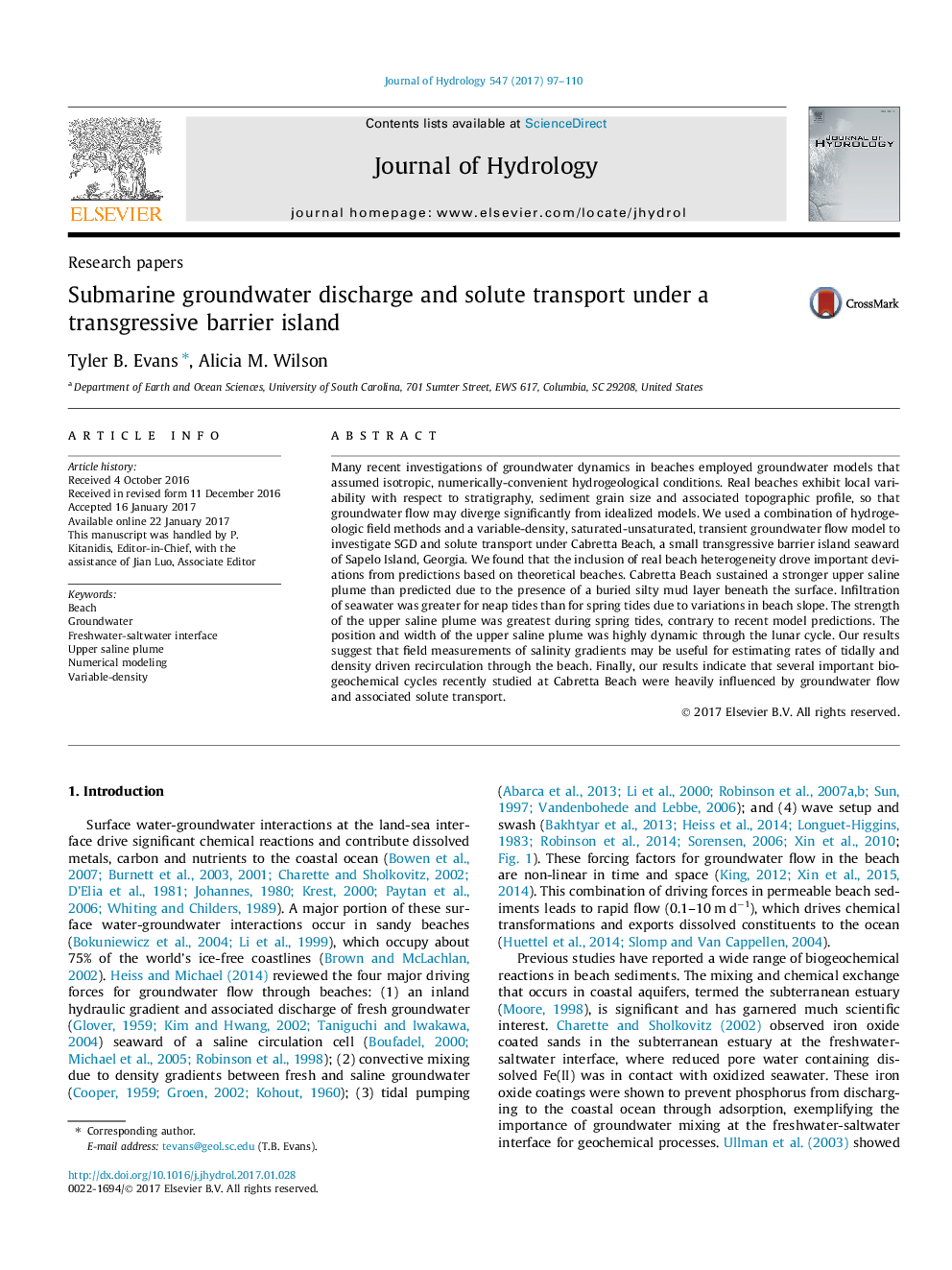| Article ID | Journal | Published Year | Pages | File Type |
|---|---|---|---|---|
| 5771032 | Journal of Hydrology | 2017 | 14 Pages |
â¢Heterogeneity in beaches drives deviations from conceptual models.â¢Field measurements of salinity gradients are useful for estimating TDR and DDR.â¢Georgia beaches discharge ~10% as much water to the Atlantic as the Altamaha River.
Many recent investigations of groundwater dynamics in beaches employed groundwater models that assumed isotropic, numerically-convenient hydrogeological conditions. Real beaches exhibit local variability with respect to stratigraphy, sediment grain size and associated topographic profile, so that groundwater flow may diverge significantly from idealized models. We used a combination of hydrogeologic field methods and a variable-density, saturated-unsaturated, transient groundwater flow model to investigate SGD and solute transport under Cabretta Beach, a small transgressive barrier island seaward of Sapelo Island, Georgia. We found that the inclusion of real beach heterogeneity drove important deviations from predictions based on theoretical beaches. Cabretta Beach sustained a stronger upper saline plume than predicted due to the presence of a buried silty mud layer beneath the surface. Infiltration of seawater was greater for neap tides than for spring tides due to variations in beach slope. The strength of the upper saline plume was greatest during spring tides, contrary to recent model predictions. The position and width of the upper saline plume was highly dynamic through the lunar cycle. Our results suggest that field measurements of salinity gradients may be useful for estimating rates of tidally and density driven recirculation through the beach. Finally, our results indicate that several important biogeochemical cycles recently studied at Cabretta Beach were heavily influenced by groundwater flow and associated solute transport.
